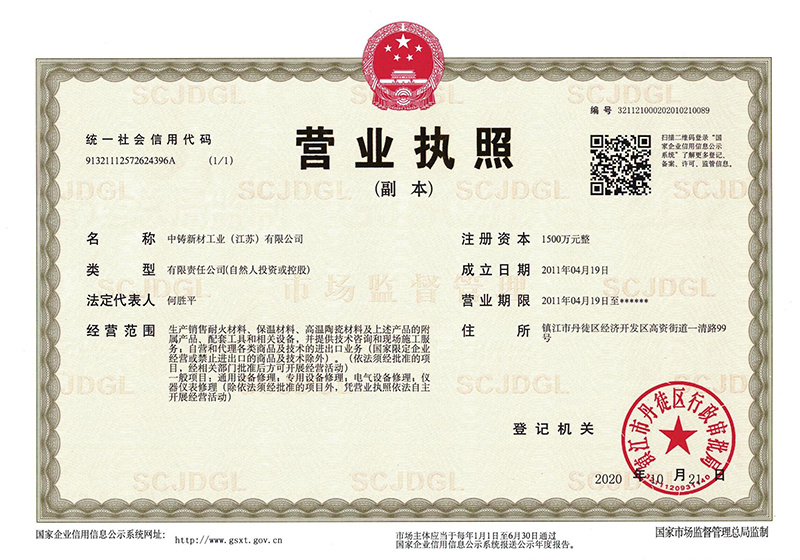News
SINO-FOUNDRY—professional refractory manufacturer
How to Select the Right Alumina Silicate Mortar for Your Project
2025-06-03
How to Select the Right Alumina Silicate Mortar for Your Project Table of Contents 1. Introduction to Alumina Silicate Mortar 2. Types of Alumina Silicate Mortar 3. Key Factors to Consider When Selecting Mortar 4. Understanding Thermal Resistance 5. Application Techniques and Best Practices 6. Environmental and Safety Considerations 7. Cost vs. Performance: Finding the
How to Select the Right Alumina Silicate Mortar for Your Project
Table of Contents
- 1. Introduction to Alumina Silicate Mortar
- 2. Types of Alumina Silicate Mortar
- 3. Key Factors to Consider When Selecting Mortar
- 4. Understanding Thermal Resistance
- 5. Application Techniques and Best Practices
- 6. Environmental and Safety Considerations
- 7. Cost vs. Performance: Finding the Right Balance
- 8. Common Mistakes to Avoid When Choosing Mortar
- 9. Frequently Asked Questions
- 10. Conclusion
1. Introduction to Alumina Silicate Mortar
Alumina silicate mortar, a key component in advanced construction and industrial applications, is renowned for its durability and high-temperature performance. These mortars are often utilized in environments that demand resilience against extreme heat and chemical exposure. Understanding the nuances of this material is essential for making informed decisions that will impact the integrity and longevity of your projects.
2. Types of Alumina Silicate Mortar
Not all alumina silicate mortars are created equal. They come in various formulations, each designed for specific applications. Here are some common types:
2.1 Castable Alumina Silicate Mortar
This type is ideal for creating complex shapes and is often used in industrial furnaces. Its ability to withstand high temperatures makes it suitable for refractory applications.
2.2 Plastic Alumina Silicate Mortar
Plastic mortars are used primarily for joint filling and repairs. They offer excellent workability and are easy to apply in both vertical and horizontal applications.
2.3 High Alumina Mortar
With a higher alumina content, this mortar provides superior thermal stability and is often employed in steelmaking and foundries where extreme conditions are prevalent.
3. Key Factors to Consider When Selecting Mortar
When selecting the appropriate alumina silicate mortar for your project, several crucial factors must be taken into account:
3.1 Temperature Resistance
The temperature resistance of the mortar is a primary concern. Evaluate the maximum temperature your application will encounter and select a mortar that can withstand that heat without compromising its properties.
3.2 Chemical Resistance
Consider the chemical environment your mortar will face. Some formulations offer better resistance to corrosive substances, which is critical in industrial applications.
3.3 Setting Time
Setting time can influence your project timeline. Depending on the urgency of your project, you may prefer a fast-setting mortar versus a slower-setting option that offers more working time.
3.4 Workability
The ease of application affects the overall quality of the work. Consider your team's skill level and the complexity of the application when choosing a mortar.
3.5 Bond Strength
Evaluate the bond strength required for your application. High bond strength is crucial for structural integrity and longevity.
4. Understanding Thermal Resistance
Thermal resistance is a fundamental characteristic of alumina silicate mortar. The ability to withstand high temperatures without degradation is vital for applications in kilns, furnaces, and other heat-intensive environments.
4.1 Testing for Thermal Resistance
To ensure the thermal resistance of the mortar meets your project requirements, consider conducting tests that simulate working conditions. Look for data sheets that provide specific thermal resistance ratings.
4.2 Impact of Thermal Shock
Thermal shock can lead to cracks and failure. Select a mortar that can handle sudden temperature changes, which is particularly important in applications that undergo rapid heating and cooling cycles.
5. Application Techniques and Best Practices
The method of application can significantly impact the performance of alumina silicate mortar. Understanding best practices will help you achieve optimal results.
5.1 Surface Preparation
Proper surface preparation is crucial for bond strength. Ensure surfaces are clean, free of contaminants, and appropriately roughened to enhance adhesion.
5.2 Mixing Guidelines
Follow the manufacturer’s instructions for mixing the mortar. Incorrect mixing ratios can lead to performance issues.
5.3 Application Methods
Consider using tools that are suitable for your application method. Troweling, gunning, or pouring may be appropriate depending on the specific mortar type.
5.4 Curing Process
Allow adequate curing time as specified by the manufacturer. Curing affects the final properties of the mortar and can influence its performance under thermal and chemical stress.
6. Environmental and Safety Considerations
Safety should always be a priority when working with construction materials. Alumina silicate mortars can release dust during handling, so using proper personal protective equipment (PPE) is essential.
6.1 Ventilation
Ensure proper ventilation in enclosed spaces to minimize inhalation risks. Dust control measures can significantly reduce exposure.
6.2 Waste Disposal
Follow local regulations regarding the disposal of waste materials. Proper disposal is important for environmental safety and compliance.
7. Cost vs. Performance: Finding the Right Balance
While budget constraints are an inevitable part of any project, selecting the cheapest option can lead to long-term issues. Consider the performance characteristics of the mortar in relation to its cost.
7.1 Long-Term Value
Investing in higher-quality mortars may reduce maintenance costs and downtime in the long run. Evaluate the total cost of ownership rather than just initial expenses.
7.2 Supplier Reputation
Choose a reputable supplier who offers reliable products. Their experience in the industry can provide valuable insights and recommendations.
8. Common Mistakes to Avoid When Choosing Mortar
Avoiding mistakes in your selection process can save time and resources.
8.1 Ignoring Project Requirements
Always align your mortar choice with the specific requirements of your project. Ignoring these can lead to failures.
8.2 Overlooking Technical Data Sheets
Technical data sheets provide critical information about the mortar’s properties. Failing to review these documents can lead to poor choices.
8.3 Inadequate Testing
Always conduct thorough testing before finalizing your mortar choice. Testing can uncover potential issues early in the process.
9. Frequently Asked Questions
9.1 What is alumina silicate mortar primarily used for?
Alumina silicate mortar is chiefly used in high-temperature applications, such as in kilns and furnaces, due to its exceptional heat resistance.
9.2 How long does alumina silicate mortar take to cure?
Curing time varies by product and application method but generally ranges from 24 to 72 hours.
9.3 Can alumina silicate mortar be used outdoors?
Yes, many formulations are suitable for outdoor use, provided they are formulated to withstand environmental elements.
9.4 Is it necessary to use a primer with alumina silicate mortar?
While not always required, using a primer can enhance adhesion, especially in challenging environments.
9.5 What are common applications for high-alumina mortars?
High-alumina mortars are commonly used in steelmaking, foundries, and refractory linings due to their superior thermal properties.
10. Conclusion
Selecting the right alumina silicate mortar for your project is a crucial step that can significantly influence the success and longevity of your installation. By carefully considering factors such as temperature resistance, chemical exposure, application techniques, and long-term value, you can make an informed decision that meets your specific project needs. Taking the time to understand these elements will ensure that your choice of mortar not only performs well under expected conditions but also contributes to the overall durability of your construction or industrial application.
Related News
2024-11-05
Zhongzhu New Materials Industry sincerely invites you to participate in the 24th International Forum and Exhibition on Recycled Metals.

WeChat public account

View mobile website
Address : No. 99, Yiqing Road, Gaozi Street, EconomicDevelopment Zone, Dantu District, Zhenjiang City
Fax : +86-511-85683066
E-mail : sales@sfr168.com
Website : https://www.sfr168.com
Copyright©2023 Sino-Foundry Refractory(Jiangsu) Co.,Ltd. Powered by:www.300.cn
Copyright©2023 Sino-Foundry Refractory(Jiangsu) Co.,Ltd.
IPV6 | SEO | Cloud Information



